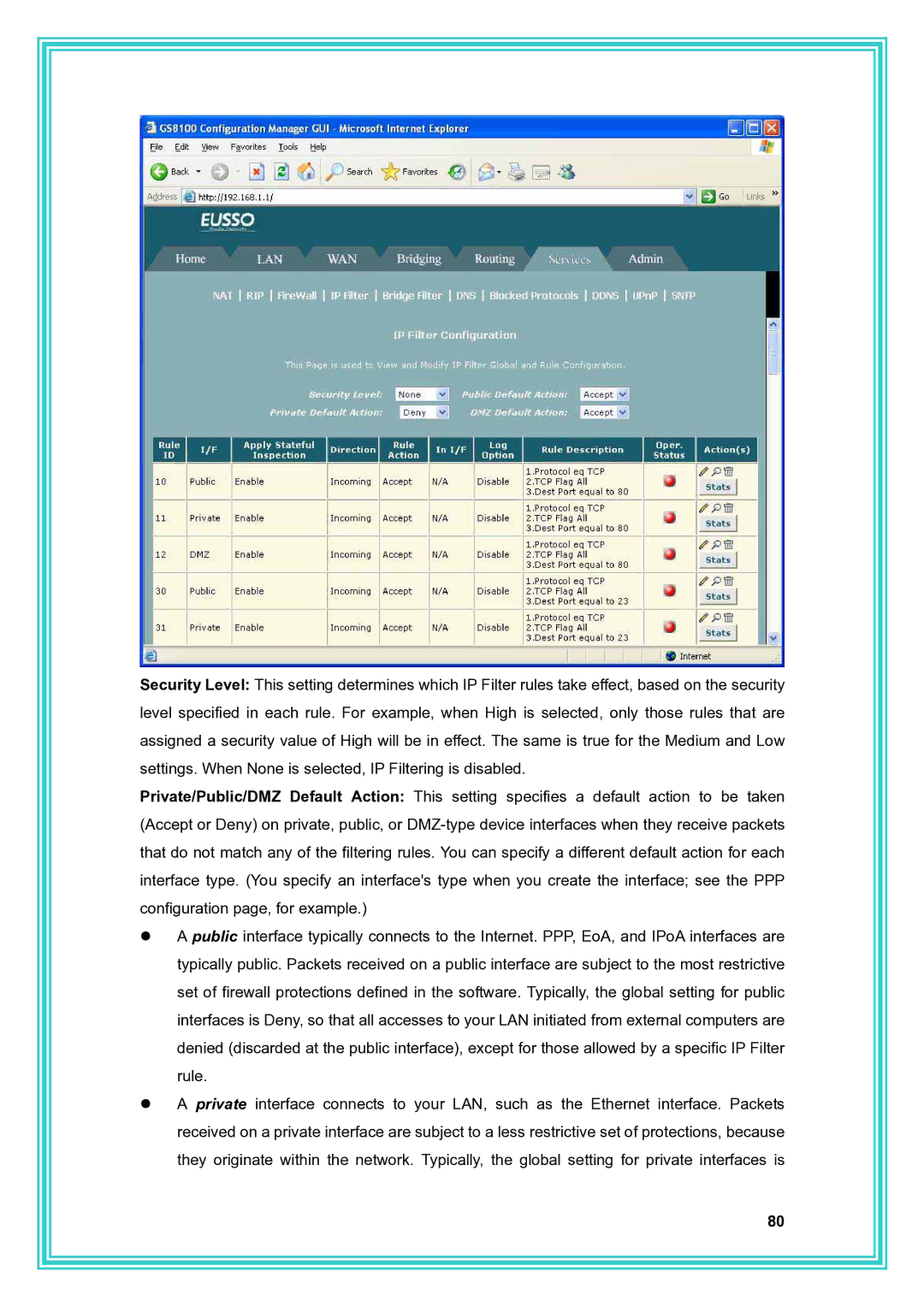
Security Level: This setting determines which IP Filter rules take effect, based on the security level specified in each rule. For example, when High is selected, only those rules that are assigned a security value of High will be in effect. The same is true for the Medium and Low settings. When None is selected, IP Filtering is disabled.
Private/Public/DMZ Default Action: This setting specifies a default action to be taken (Accept or Deny) on private, public, or
zA public interface typically connects to the Internet. PPP, EoA, and IPoA interfaces are typically public. Packets received on a public interface are subject to the most restrictive set of firewall protections defined in the software. Typically, the global setting for public interfaces is Deny, so that all accesses to your LAN initiated from external computers are denied (discarded at the public interface), except for those allowed by a specific IP Filter rule.
zA private interface connects to your LAN, such as the Ethernet interface. Packets received on a private interface are subject to a less restrictive set of protections, because they originate within the network. Typically, the global setting for private interfaces is
80
